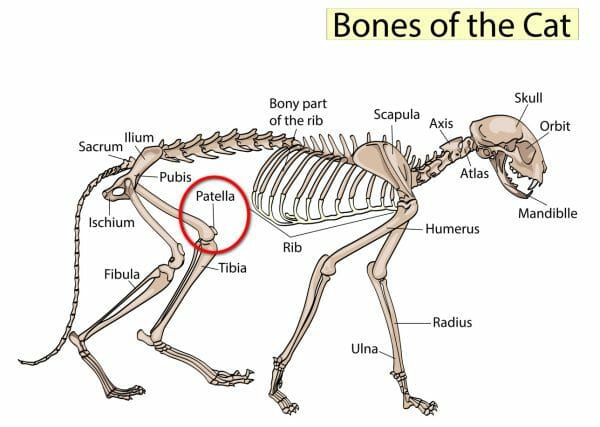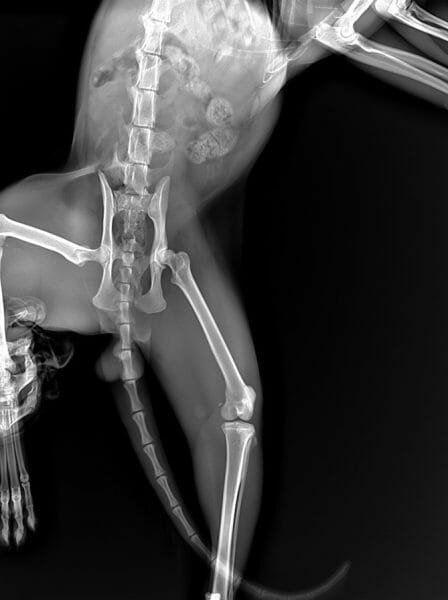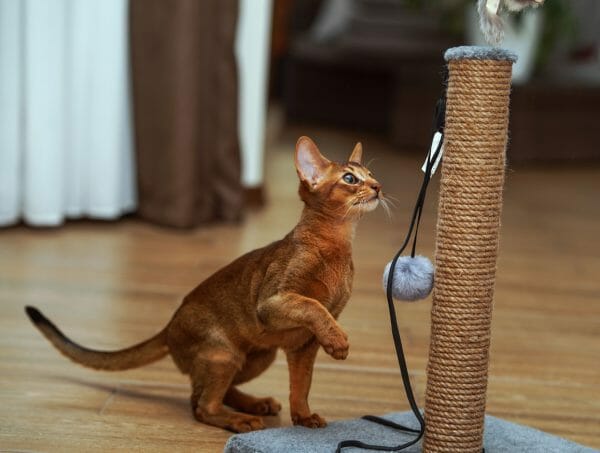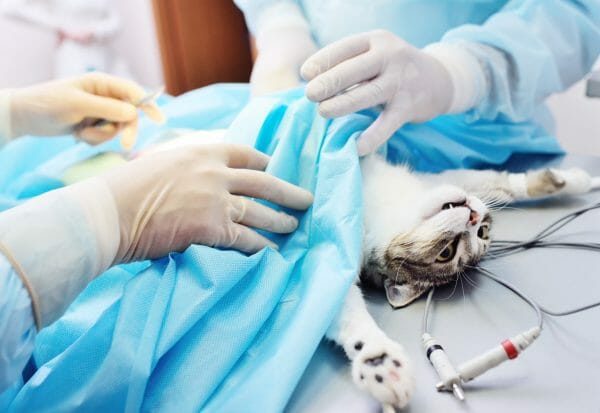What Is a Luxating Patella in Cats?
A luxating patella in cats is an orthopedic condition that affects the knee joint’s ability to function. The term “luxating” means that something is dislocated or out of place, while “patella” is the medical term for the kneecap.
The knee of a cat is complex. There are multiple muscles, ligaments, and tendons that all connect the femur (or thighbone) to the tibia (the shinbone). The patella sits below the patellar ligament which, in turn, sits in the groove of the femur (known as the trochlear groove).
Whenever the knee is flexed or moved, the patella will move within the trochlear groove. When there is an issue with the function of the kneecap, it may slide out of this groove. This makes it hard to flex and bend the knee joint without severe discomfort.
Running, jumping, and even walking when the patella is out of position can become very difficult for a feline. This means it is important to seek a full assessment from a veterinarian so that the correct treatment can be given.

Symptoms of a Luxating Patella
Identifying the signs of a luxating patella early may be the key to a cat’s early treatment and recovery. The following are potential indicators of the condition:
- Limping or intermittent lameness in either one of the hind legs
- “Bunny hopping” on both limbs
- Spending a considerable amount of time chewing or licking the affected joint
- Popping or clicking sounds around the knee joint
In some cases, the condition may be intermittent. If the patella slips back into position, the cat will be able to walk on the knee as normal. However, it is possible that a cat could have a luxating patella without any of these symptoms. However, a vet will usually be able to spot this during a routine check-up.

Diagnosis and Grade Levels
Luxating patellae should be diagnosed by a vet. It is possible that the cat may have the same condition in more than one knee. Through routine examinations, it is possible to diagnose a luxating patella in younger cats that have been born with the condition.
If the vet suspects that a cat may have developed this condition, they will use X-rays to find out the full extent of the issue, as well as to detect any other issues. This is particularly important when the dislocation has been brought about through injury.
There are four levels of severity associated with a luxating patella in cats. The vet’s assessment will determine which grade applies to the cat.
- Grade I: Dislocation from the trochlear groove occurs when the vet applies pressure to it. However, it falls back into place upon release.
- Grade II: The cat’s kneecap will pop in and out intermittently. However, it will stay out of place until the leg is straight or positioned in a way that lets the kneecap fall back into the groove.
- Grade III: The patella remains out of the groove most of the time. However, a vet may be able to manually push it back into position.
- Grade IV: The patella remains permanently out of the trochlear groove, and the vet cannot reposition it.
Medial Luxating Patella in Cats
The most common luxating patella is medial. This means that the patella has been dislocated towards the inside of the knee.
Lateral Luxating Patella in Cats
A lateral luxation occurs when the kneecap has been dislocated toward the outside of the knee. Bilateral luxating patella in cats occurs when both hind limbs are affected in this way.

Causes
A luxating patella in cats has two primary causes. It can either be caused through blunt trauma or it may be congenital. Breeds such as the Burmese, Devon Rex, and the Abyssinian are all susceptible to this condition. Because this condition can be inherited, if a cat has a luxating patella, it should not be bred.
Treatment
Depending on the severity of the luxating patella in a cat, the vet may offer several different treatment options.
With a Grade I or Grade II luxating patella, the vet may suggest rest and restricting the cat’s exercise, along with the use of anti-inflammatory medications. This may be enough to treat the condition. In these milder cases, the cat can usually live a relatively healthy and normal life without the need for surgery. Occasional bouts of rest and medication may be required when problems arise with the knee.
If this treatment is not effective and the cat is in considerable pain and unable to move, then surgery will be required. This is common with Grade III and IV levels. Several different surgical options may be available. However, the procedure will usually involve deepening the trochlear groove and reconstructing the soft tissue surrounding the patella. In some cases, abnormal-shaped bones may need to be reshaped.
The luxating patella cat surgery cost will vary depending on the surgical techniques used. However, such procedures can be expensive. For this reason, it is important to ensure that a good level of pet insurance is taken out whenever buying or adopting a cat.

Cat Luxating Patella Surgery Recovery
Most cats will enjoy a quick recovery from surgery. This can be aided with some form of physical therapy. During the recovery process, helping a cat to rest is important. Although many cats tend to climb and will enjoy an active lifestyle, creating steps to assist in their journey will ensure they do not exert themselves too much.
It is important to note that while most cats won’t have any further issues, it is possible that reinjury of the knee is still possible.
Preventing Patella Luxation
Unfortunately, congenital patella luxation is not something that can be prevented. Similarly, it is difficult to stop cats from injuring themselves when climbing and jumping from great heights.
With bilateral luxating patella in an overweight cat is a common occurrence, maintaining a healthy diet and promoting exercise should be high on the agenda for any responsible pet owner.
If a cat is displaying any of the symptoms of luxating patella, getting diagnosed and treated by the vet as quickly as possible should always be a priority to ensure a full recovery can be made.
Learn more about cat health issues by reading our frequently asked cat questions. Why do cats eat grass? Can my cat get rabies?




